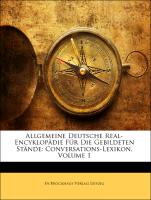Treatise on Heavy-Ion Science
BücherAngebote / Angebote:
1. Heavy Ions and Nuclear Fission.- 1. Introduction.- 2. Heavy Ions and Low-Energy Nuclear Fission.- 2.1. Spontaneous Fission and Stability of Very Heavy Nuclei.- 2.2. Fission of Nuclei far off ? Stability.- 2.3. Unusual Fission Properties of Very Heavy Actinide Nuclei.- 2.4. Production of Low-Excited Compound Nuclei with Z ? 100 in Heavy-Ion-Induced Reactions.- 2.5. Prospects of Heavy-Ion-Induced Reactions in Fission Studies of Transfermium Nuclei.- 3. Fission of Highly Excited and Rotating Nuclei.- 3.1. Fission of Heated Rotating Nuclei¿Saddle-Point Properties.- 3.2. Fission of Cold Nuclei with High Angular Momenta: Theoretical Predictions and Experimental Prospects.- 3.3. Isobaric Charge and Mass Distributions of Fragments from Fission of Highly Excited Nuclei.- 4. Nuclear Fission and Nucleus-Nucleus Collisions: Salient Examples of Large-Scale Collective Nuclear Motion.- 4.1. Fission and Nucleus-Nucleus Collisions: Unifying Features.- 4.2. Fission and Deep Inelastic Transfer Reactions: Distinguishing Features.- 4.3. Fission, Fast Fission, and Compound Nucleus Formation: Distinguishing Features.- 5. Conclusion.- Acknowledgments.- Note added in Proof.- References.- 2. Transuranium Nuclei.- 1. Introduction.- 1.1. General.- 1.2. History of Discovery.- 1.3. General References.- 2. Nuclear Properties of the Transuranium Elements.- 2.1. Nuclear Masses and Fission Barriers.- 2.2. Spontaneously Fissioning Isomers.- 2.3. Density of Levels Above the Fission Barrier.- 2.4. Effect of Angular Momentum upon Fission Barriers.- 2.5. Decay Properties of the Transuranium Nuclei.- 2.6. Ground-State Spontaneous Fission Systematics.- 2.7. Fission Fragment Energy and Yield Distributions.- 3. Chemical and Physical Properties of the Transuranium Elements.- 3.1. General Properties.- 3.2. Chromatography of the Transuranium Elements.- 3.3. Use of Transuranium Targets in Heavy-Ion Reaction Studies.- 3.4. Health and Safety Aspects of Transuranium Element Use.- 4. Identification of Transuranium Reaction Products.- 4.1. General Considerations.- 4.2. Chemical Methods.- 4.3. The Helium Jet Drums, Tapes, and Wheels.- 4.4. Magnetic Spectrometers, Velocity Filters.- 4.5. Time of Flight (TOF), Decay in Flight (DIF), and Blocking Techniques.- 5. Synthesis of Transuranium Elements.- 5.1. General Considerations.- 5.2. Deexcitation of Primary Reaction Products.- 5.3. Deep Inelastic Transfer Reactions.- 5.4. ¿Transfer¿ Reactions.- 5.5. Complete Fusion Reactions.- 6. Future Directions.- 6.1. New Technical Developments.- 6.2. Deep Inelastic Transfer and Incomplete Fusion Reactions.- 6.3. Cold Fusion Reactions.- 6.4. Secondary Beams.- 6.5. Summary.- Note Added in Proof.- References.- 3. Superheavy Elements.- 1. Introduction.- 2. Predictions for the Properties of Superheavy Elements.- 2.1. Nuclear Properties.- 2.2. Chemical Properties.- 3. Attempts to Synthesize Superheavy Elements with Heavy-Ion Beams.- 4. Searches for Superheavy Elements in Nature.- 4.1. General Remarks.- 4.2. Possibility of Producing Superheavy Elements by Nucleosynthesis.- 4.3. Search for Superheavy Elements in Galactic Cosmic Rays.- 4.4. Experimental Methods of Searches for Long-lived Superheavy Elements in Terrestrial and Extraterrestrial Samples.- 4.5. The Physical and Chemical Aspects of the Search for SHE in Nature.- 5. Conclusion.- Appendix A.- Appendix B.- Appendix C.- References.- 4. Relativistic Heavy-Ion Collisions: Experiment.- 1. Introduction.- 2. Observables and Experimental Techniques.- 2.1. Definitions and Units.- 2.2. Experimental Techniques and Their Observables.- 2.3. Pseudo-observables.- 3. Nuclear Physics in RHI Collisions.- 3.1. Limiting Fragmentation.- 3.2. Factorization.- 3.3. Electromagnetic Dissociation.- 3.4. Reaction Characteristics of the Midrapidity Region.- 3.5. Source Sizes.- 4. Particle Production in RHI Collisions.- 4.1. Proton-Proton Collisions.- 4.2. pA ColHsions.- 4.3. Particle Production in AA Collisions at Low and Moderate Energies.- 4.4. Very-High-Energy Nucleus-Nucleus Interactions.- 4.5. The Centauro Puzzle.- 4.6. RHI Interactions and Extensive Air Showers.- 5. Conclusions and Outlook.- References.- 5. Relativistic Heavy-Ion Reactions: Theoretical Models.- 1. Introduction.- 1.1. General Considerations.- 1.2. Theoretical Orientation.- 1.3. Hierarchy of Models.- 1.4. The Hydrodynamical Approximation.- 2. Hydrodynamic Models.- 2.1. Introduction.- 2.2. Hydrodynamical Model Predictions.- 2.3. Further Developments.- 3. Microscopic Models.- 3.1. Overview.- 3.2. Cascade Models.- 3.3. Classical Dynamics Models.- 3.4. Hybrid Models.- 4. Global Equilibrium Models.- 4.1. The Fireball Model.- 4.2. The Firestreak Model.- 5. Formation of Composite Nuclei.- 5.1. Models.- 5.2. Comparison.- 6. Summary.- 6.1. Comparison to Experiment.- 6.2. Present Status.- Acknowledgments.- References.- Note Added in Proof (Chapter 1).
Folgt in ca. 5 Arbeitstagen




